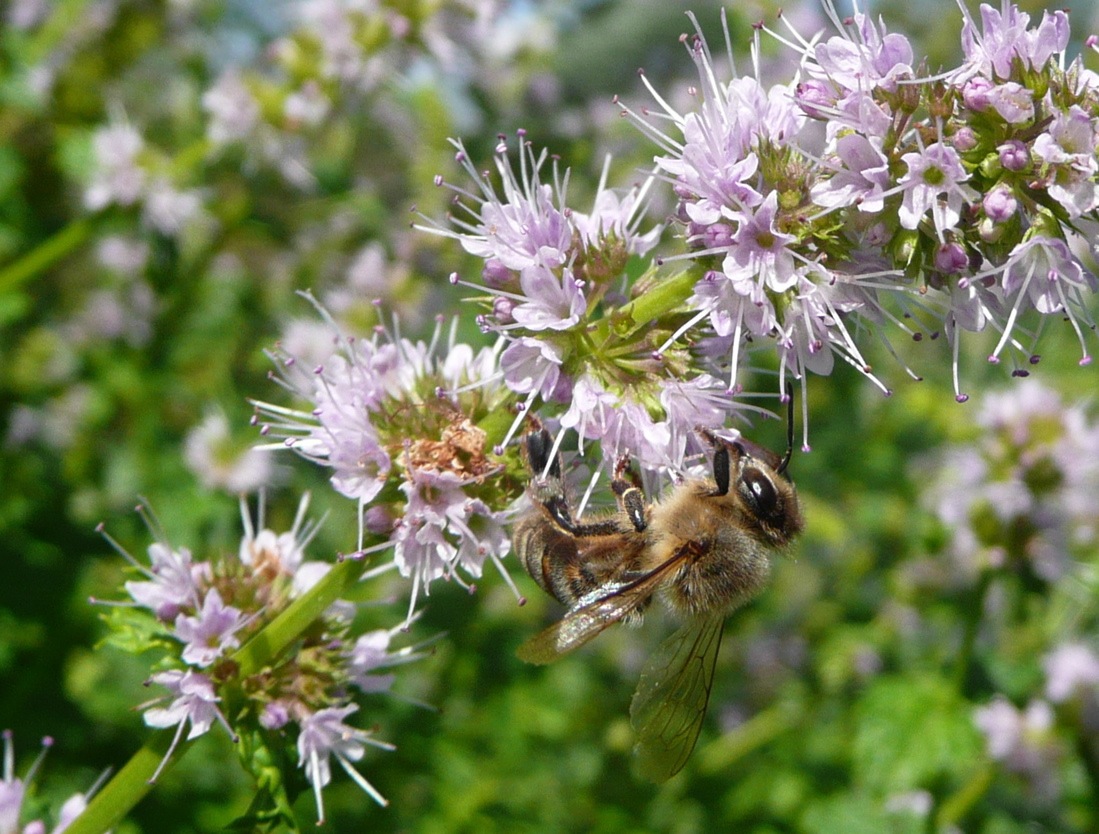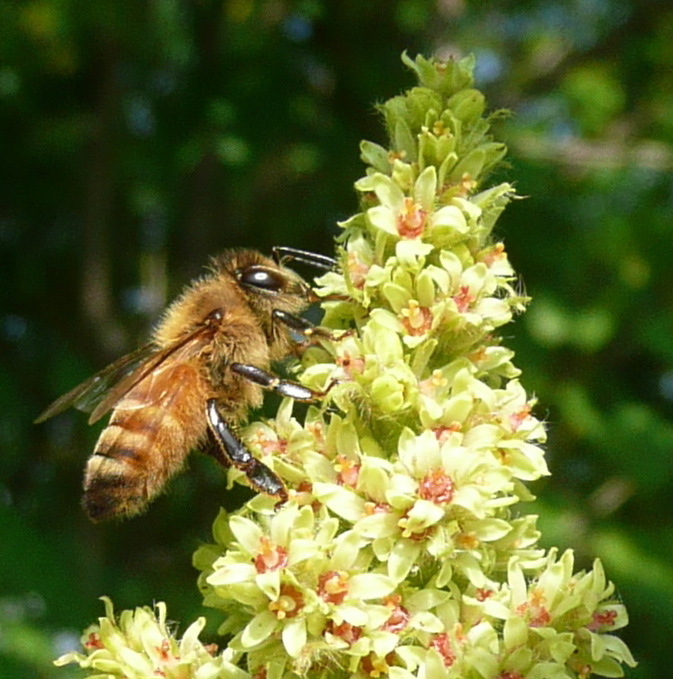Author: maya
Live From the Hive: July 2015

“The Mints” by Annie Watson, Thistle Hill Studio
Honey bees love the flowers of the mint family (Lamiaceae). Spearmint, catmint, lemon balm, catnip… the list goes on. Did you know that basil is in the mint family? So are lavender, oregano, and rosemary. In our area, the mints bloom in June and July.
Pollinators are threatened all over the world. You can help them out by planting bee-friendly plants in your garden. Plant plenty of herbs so that you can leave some to flower instead of harvesting them all.
For more information about what you can plant for bees and other pollinators, go to Honey Bee Suite.
Live from the Hive: June 2015

“Staghorn sumac bloom” by Annie Watson, Thistle Hill Studio
June brings the blooming of the staghorn sumac. Its beautiful flowers are a major food source for honey bees. I’ve seen them covered with bees on a warm June afternoon.
Largest of the North American sumacs at 15-25 feet tall, Staghorn sumac is named after the” velvet” on young branches similar to that covering the antlers of a male (stag) deer. In early summer, male and female flower cones on separate plants are covered with many tiny flowers. After pollination the flowers turn into clusters of “drupes” — small red hairy fruits that are eaten by deer and birds all winter. The foliage turns red and orange in the fall and a hedge of sumacs is really beautiful at that time of year.
By allowing sumac to grow in your hedgerows and property edges, you provide important food for honey bees, deer, and birds.
For more about this plant go to the Missouri Botanical Garden web site.